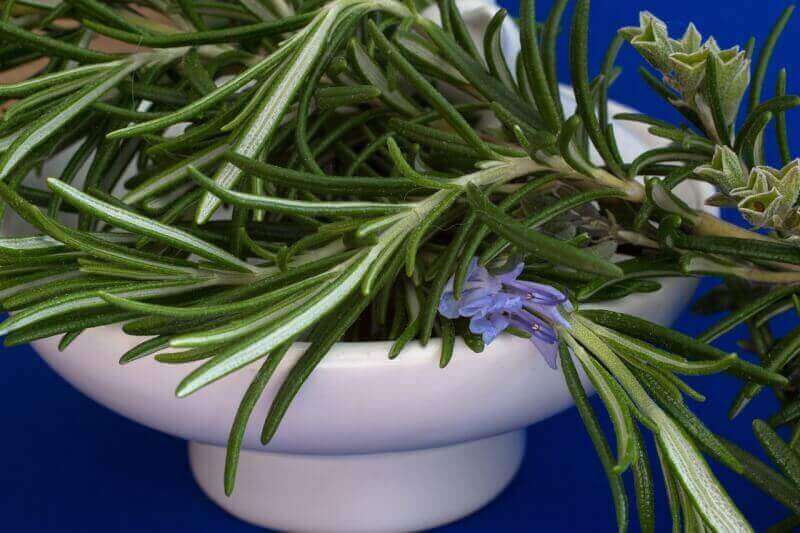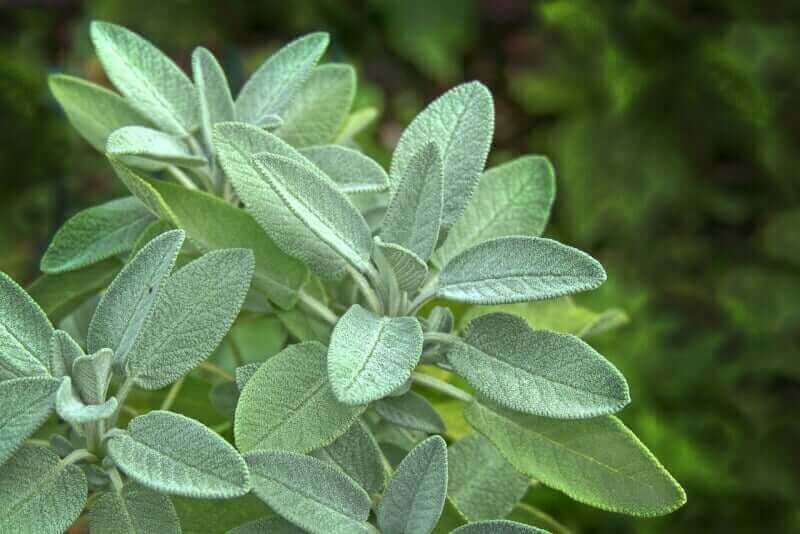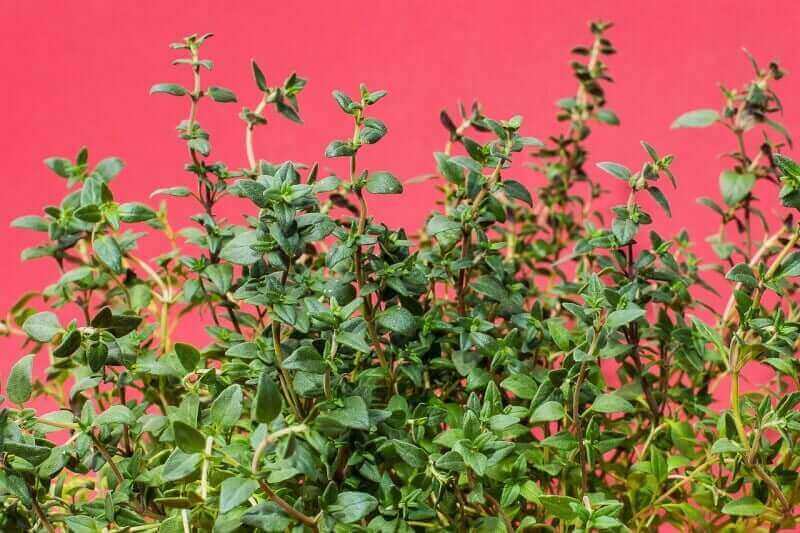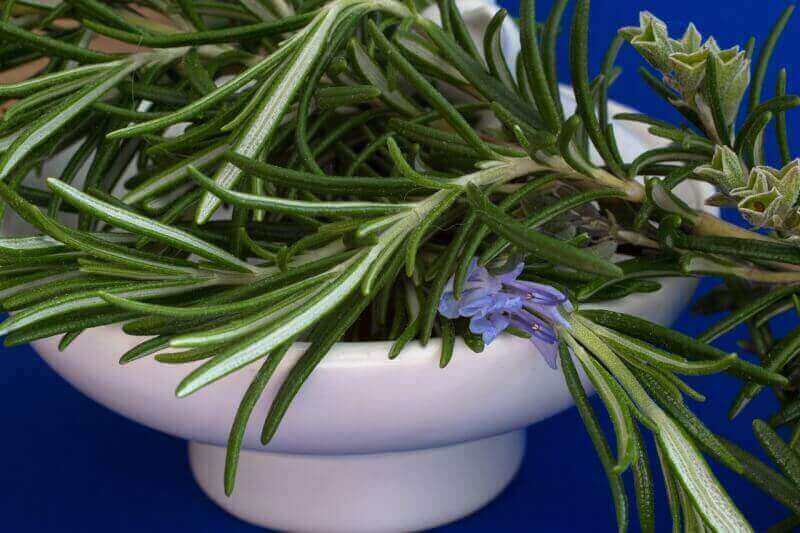Are you looking to add some fresh flavor to your home-cooked meals? Look no further than your very own kitchen garden! With so many herbs to choose from, it can be difficult to know where to start. That’s why we’ve put together a guide to help you discover the best herbs to grow in your kitchen garden. From bold and aromatic basil to versatile and vibrant cilantro, you’ll find all the information you need to elevate your culinary creations and create a thriving herb garden right at your fingertips. So roll up your sleeves, grab your gardening gloves, and get ready to embark on a deliciously fragrant journey!

Basil
Types of Basil
Basil is a versatile and aromatic herb that comes in several different varieties. Some popular types of basil include Genovese basil, Thai basil, and lemon basil. Genovese basil is the classic variety used in Italian cuisine, known for its strong flavor and large, tender leaves. Thai basil has a distinct flavor, with a hint of licorice and spice, making it a must-have for Thai and other Southeast Asian dishes. Lemon basil has a lemony scent and taste, adding a refreshing twist to salads, sauces, and desserts.
Growing Conditions
Basil thrives in warm, sunny conditions, so it is best to grow it during the summer months. It prefers well-drained soil and should be planted in a location that receives at least six hours of sunlight daily. Basil can be grown from seeds or propagated from cuttings. When planting from seeds, sow them directly into the soil or start them indoors and transplant once the seedlings are about six inches tall. Ensure the soil is kept consistently moist but not waterlogged, and provide regular fertilization to encourage healthy growth.
Harvesting and Uses
You can start harvesting basil leaves once the plant has reached around six to eight inches in height. To harvest, simply pinch off the leaves or cut the stems just above a leaf node. Regular harvesting will stimulate new growth and ensure a continuous supply of fresh basil throughout the growing season. Basil is best used fresh, added to pasta dishes, salads, sandwiches, and sauces. It can also be dried or frozen for later use, ensuring you can enjoy the flavor of basil all year round.
Mint
Varieties of Mint
Mint is a popular herb known for its refreshing flavor and fragrance. There are several mint varieties to choose from, each with its unique characteristics. Peppermint is one of the most common varieties and has a strong, cooling flavor. Spearmint has a milder taste and is often used in beverages and desserts. Chocolate mint has a hint of chocolate flavor, making it a delicious addition to desserts and hot beverages. Apple mint has a fruity aroma, while pineapple mint offers a tropical twist. Other varieties include ginger mint, orange mint, and lemon balm.
Cultivation Tips
Mint is a hardy herb that can be easily grown in a kitchen garden. It prefers moist soil and partial shade but can tolerate full sun in cooler climates. It is best to grow mint in containers to prevent it from spreading and taking over the garden. Choose a pot with good drainage and fill it with rich, well-draining soil. Mint can be grown from seeds, although it is often easier to propagate it from cuttings. Once established, mint requires regular watering and occasional fertilization to promote healthy growth.
Harvesting Methods
Mint leaves can be harvested once the plant has grown to a sufficient height, usually around six to eight inches. To harvest, simply snip off the leaves or stems with a pair of clean scissors or shears. It is best to harvest mint in the morning when the leaves contain more essential oils, which contribute to its flavor and fragrance. Mint leaves can be used fresh in a variety of dishes, such as salads, drinks, and desserts. They can also be dried for long-term storage or used to make homemade mint tea.
Rosemary
Growing Rosemary
Rosemary is a woody perennial herb that is not only aromatic but also adds a beautiful touch to any kitchen garden. It prefers a sunny location and well-drained soil. If you live in a cooler climate, it is best to grow rosemary in a container so you can bring it indoors during the winter months. When planting rosemary, ensure there is enough space between plants to allow for air circulation. Rosemary can be propagated from cuttings or started from seeds, although cuttings tend to be more reliable. Plant the cuttings or seedlings in the soil and water regularly until the plant becomes established.
Caring for Rosemary
Rosemary is a low-maintenance herb that requires minimal care once established. It is drought-tolerant and doesn’t require frequent watering. However, it is important to water deeply when you do water, ensuring the soil is thoroughly moistened. Rosemary should be pruned regularly to maintain its shape and prevent it from becoming too leggy. Pruning will also stimulate new growth, ensuring a healthy and bushy plant. Additionally, avoid over-fertilizing rosemary, as this can lead to a decline in flavor and aroma. A light application of organic fertilizer once a year is usually sufficient.
Harvesting and Storage
You can start harvesting rosemary once the plant has reached a height of about six to eight inches. To harvest, simply snip off the sprigs or stems as needed using clean pruning shears or scissors. It is best to harvest rosemary just before it flowers, as this is when the essential oils are most concentrated. Rosemary can be used fresh in a variety of dishes, such as roasted meats, soups, and grilled vegetables. If you have an abundance of rosemary, it can also be dried or frozen for later use. To dry rosemary, hang the sprigs upside down in a cool, well-ventilated area until they are crispy. Store the dried rosemary in an airtight container in a cool, dark place.
Thyme
Different Thyme Varieties
Thyme is an aromatic herb with a wide range of flavors and uses. Common thyme, also known as English thyme, is the most widely grown variety and has a mild, slightly peppery flavor. Lemon thyme has a lemony scent and taste, making it a popular choice for fish, poultry, and summer salads. Creeping thyme, as the name suggests, is a low-growing variety that works well as ground cover or in rock gardens. French thyme has a bold flavor and is often used in French cuisine. Other varieties include caraway thyme, silver thyme, and woolly thyme.
Ideal Growing Conditions
Thyme thrives in full sun and well-drained soil. It is best to grow thyme in a raised bed or container as it doesn’t like to have its roots sitting in wet soil. Thyme can be propagated from seeds, but it is often easier to start with seedlings or cuttings. Plant thyme in the spring or early summer, allowing enough space between plants for air circulation. Thyme requires regular watering, especially during dry periods, but ensure the soil is not waterlogged. Avoid over-fertilizing thyme, as this can lead to excessive foliage growth and a decline in flavor.
Harvesting and Drying Techniques
Thyme can be harvested as soon as the plant has established itself, which usually takes about three to four months. To harvest, simply snip off the stems just above a leaf node using clean pruning shears or scissors. Regular harvesting will promote the growth of new stems and ensure a continuous supply of fresh thyme. Thyme leaves can be used fresh in a variety of dishes, such as roasted meats, soups, and stews. Thyme can also be dried for long-term storage. To dry thyme, hang the sprigs upside down in a cool, well-ventilated area until they are dry and brittle. Store the dried thyme in an airtight container in a cool, dark place.

Parsley
Flat-leaf Parsley vs Curly Parsley
Parsley is a versatile herb that comes in two main varieties – flat-leaf parsley and curly parsley. Flat-leaf parsley, also known as Italian parsley, has a robust flavor and is often preferred in cooking. It has flat, serrated leaves and is commonly used in Mediterranean and Middle Eastern cuisines. Curly parsley, on the other hand, has tightly curled leaves and a milder flavor. It is often used as a garnish and adds visual appeal to dishes. Both varieties are easy to grow and have similar cultivation requirements.
Planting and Caring for Parsley
Parsley is a cool-season herb that can be planted in the spring or fall. It prefers well-drained soil and partial shade, although it can tolerate full sun in cooler climates. Parsley can be grown from seeds, but they have a slow germination rate and may take several weeks to sprout. To speed up germination, soak the seeds in warm water overnight before planting. Once the seedlings have sprouted, thin them out to ensure there is enough space for each plant to grow. Parsley requires regular watering to keep the soil evenly moist, especially during hot, dry periods.
Harvesting and Storing
You can start harvesting parsley leaves once the plant has reached a height of about six inches. To harvest, simply snip off the outer leaves or cut the stems just above the soil level. Regular harvesting will stimulate new growth and ensure a continuous supply of fresh parsley. Both flat-leaf and curly parsley can be used fresh in a variety of dishes, such as salads, soups, and sauces. It is best to use parsley as soon as possible after harvesting, as its flavor and nutritional value will diminish over time. If you have an excess amount of parsley, it can be dried or frozen for later use. To dry parsley, hang the sprigs upside down in a cool, well-ventilated area until they are crispy. Store the dried parsley in an airtight container in a cool, dark place.
Chives
Types of Chives
Chives are a versatile herb that adds a mild onion flavor to dishes. There are several types of chives, including common chives, garlic chives, and Siberian chives. Common chives have thin, hollow leaves and are commonly used as a garnish or added to salads, soups, and baked potatoes. Garlic chives have flat, broad leaves and a distinct garlic flavor. They are often used in Asian cuisine and pair well with stir-fries and dumplings. Siberian chives have a mild onion flavor and are hardy in cold climates, making them an excellent choice for northern gardeners.
Growing Chives Indoors
Chives can be grown both indoors and outdoors, making them a great herb for kitchen gardens. When growing chives indoors, choose a pot with good drainage and fill it with a well-draining potting mix. Place the pot in a sunny location, such as a south-facing window, to ensure the chives receive enough sunlight. Water the chives regularly, keeping the soil evenly moist but not waterlogged. Chives can be grown from seeds, but they have a slow germination rate. It is often easier to propagate chives from divisions or plant starters purchased from a nursery.
Harvesting and Preserving
Chives can be harvested once the plant has established itself, usually after a few months. To harvest, simply snip off the leaves near the base using clean scissors or shears. Regular harvesting will encourage new growth and ensure a constant supply of fresh chives. Chives can be used fresh in a variety of dishes, such as omelets, dips, and creamy soups. If you have excess chives, they can be frozen for later use. To freeze chives, chop them into small pieces and place them in an airtight container or freezer bag. Alternatively, you can dry chives by hanging the long stems upside down in a cool, well-ventilated area until they are dry and brittle.

Oregano
Greek Oregano vs Italian Oregano
Oregano is a flavorful herb commonly used in Mediterranean and Italian cuisines. There are two main types of oregano – Greek oregano and Italian oregano. Greek oregano has a strong, robust flavor and is often considered the superior variety for culinary use. It adds a distinctive flavor to marinades, roasted meats, and tomato-based sauces. Italian oregano, on the other hand, has a milder flavor and is often used in Italian dishes such as pizzas and pasta sauces. Both varieties are easy to grow and have similar cultivation requirements.
Growing Tips for Oregano
Oregano is a hardy herb that can be grown in a variety of conditions. It prefers well-drained soil and full sun but can tolerate partial shade. Oregano can be grown from seeds, although it is often easier to start with young plants or cuttings. Plant oregano in the spring or early summer, ensuring there is enough space between plants for air circulation. Oregano requires regular watering, especially during dry periods, but avoid over-watering as this can lead to root rot. Prune the oregano regularly to maintain a compact shape and stimulate new growth.
Methods of Drying Oregano
Oregano can be harvested once the plant has reached a height of around six to eight inches. To harvest, simply snip off the leaves or stems using clean pruning shears or scissors. Oregano leaves can be used fresh in a variety of dishes, such as soups, stews, and sauces. If you have an abundance of oregano, it can also be dried for long-term storage. To dry oregano, hang the stems upside down in a cool, well-ventilated area until the leaves are dry and brittle. Once dried, remove the leaves from the stems and store them in an airtight container in a cool, dark place.
Cilantro
Cilantro vs Coriander
Cilantro and coriander come from the same plant, but they refer to different parts of the plant and have distinct flavors. Cilantro refers to the fresh leaves and stems of the plant and has a bright, citrusy flavor. It is commonly used in Mexican, Indian, and Southeast Asian cuisines. Coriander, on the other hand, refers to the dried seeds of the plant. It has a warm, nutty flavor and is often used in spice blends and pickling. Both cilantro and coriander are easy to grow and have similar cultivation requirements.
Cultivating Cilantro
Cilantro is a cool-season herb that prefers cooler temperatures and partial shade. It is best to sow cilantro seeds directly into the garden in early spring or fall. Cilantro seeds have a short shelf life, so it is recommended to buy fresh seeds each growing season. Once the seedlings have sprouted, thin them out to ensure there is enough space for each plant to grow. Cilantro requires regular watering to keep the soil evenly moist, especially during hot, dry periods. It is important to harvest cilantro regularly to prevent it from bolting, as the leaves will become bitter once the plant flowers.
Harvesting Coriander Seeds
Cilantro leaves can be harvested once the plant has reached a sufficient height, usually around six to eight inches. To harvest, simply snip off the leaves or cut the stems just above a leaf node. Regular harvesting will stimulate new growth and ensure a continuous supply of fresh cilantro leaves. If you want to harvest coriander seeds, allow the plant to flower and produce seeds. Once the seeds have turned brown and are dry, cut off the seed heads and place them in a paper bag. Hang the bag in a cool, dry area until the seeds have fully dried. Remove the seeds from the seed heads and store them in an airtight container in a cool, dark place.

Sage
Different Sage Varieties
Sage is a popular herb known for its strong, earthy flavor. There are several varieties of sage, each with its unique characteristics. Common sage is the most widely grown variety and has gray-green leaves with a strong aroma. Pineapple sage has a pineapple-like fragrance and is often used in teas and desserts. Golden sage has yellow-green leaves and adds a pop of color to the garden. Clary sage has large, hairy leaves and is primarily grown for its ornamental value. Other varieties include purple sage, tricolor sage, and berggarten sage.
Planting and Growing Sage
Sage is a hardy herb that can be easily grown in a kitchen garden. It prefers well-drained soil and full sun but can tolerate partial shade. Sage can be grown from seeds, although it is often easier to start with young plants or cuttings. Plant sage in the spring or early summer, ensuring there is enough space between plants for air circulation. Sage requires regular watering until it becomes established, but it is drought-tolerant once mature. Prune the sage regularly to maintain its shape and promote new growth.
Harvesting and Storing
Sage leaves can be harvested once the plant has reached a height of around six to eight inches. To harvest, simply pluck the leaves or cut the stems just above a leaf node using clean pruning shears or scissors. Regular harvesting will stimulate new growth and ensure a continuous supply of fresh sage leaves. Sage leaves can be used fresh in a variety of dishes, such as roasted meats, stuffing, and sauces. They can also be dried or frozen for later use. To dry sage, hang the sprigs upside down in a cool, well-ventilated area until they are dry and brittle. Store the dried sage in an airtight container in a cool, dark place.
Dill
Types of Dill
Dill is an aromatic herb known for its feathery leaves and tangy flavor. There are several types of dill, each with its unique characteristics. Fernleaf dill is a compact variety that is perfect for small gardens or container growing. Bouquet dill is a tall variety that produces large seed heads and is often used for pickling. Mammoth dill is a vigorous variety that grows taller and produces larger leaves. Dukat dill has a mild flavor and is often preferred for culinary use. Other varieties include tetra dill, superdukat dill, and long island dill.
Growing Dill in a Kitchen Garden
Dill is a cool-season herb that prefers full sun and well-drained soil. It can be grown from seeds, which should be sown directly into the garden in early spring or fall. Dill has a long taproot, so it is best to sow the seeds where they will grow rather than transplanting seedlings. Thin the seedlings once they have sprouted to ensure there is enough space for each plant to grow. Dill requires regular watering to keep the soil evenly moist, especially during hot, dry periods. It is important to harvest dill regularly to prevent it from bolting, as the leaves will become bitter once the plant flowers.
Harvesting and Preserving
Dill leaves can be harvested once the plant has reached a height of about six to eight inches. To harvest, simply snip off the leaves or cut the stems just above a leaf node using clean pruning shears or scissors. Regular harvesting will stimulate new growth and ensure a continuous supply of fresh dill leaves. Dill leaves can be used fresh in a variety of dishes, such as salads, dips, and pickles. If you have an abundance of dill, it can also be preserved for later use. Dill can be frozen, dried, or pickled. To freeze dill, chop the leaves into small pieces and place them in a freezer bag or airtight container. To dry dill, hang the stems upside down in a cool, well-ventilated area until they are dry and brittle. Store the dried dill in an airtight container in a cool, dark place.


